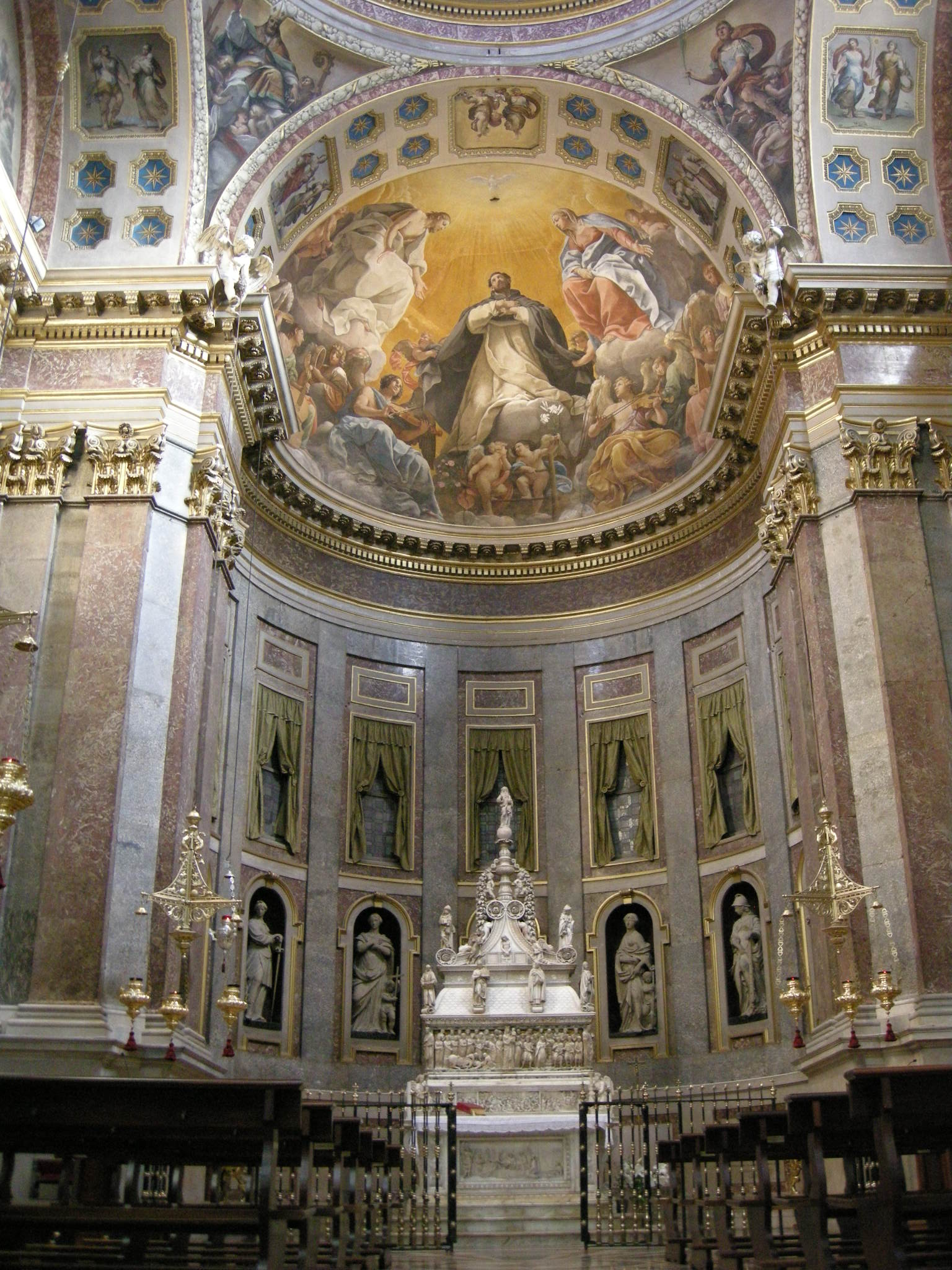The triumph of Guido Reni and his legacy in Bologna
Updated on 13 November 2024 From Arte Grand Tour
Guido Reni is one of the most iconic
figures of seventeenth-century painting in Bologna where, having finished his
time in Rome, he returned in 1614 laden with honours. Known by the whole of
Europe as “the divine Guido”, he was the most famous painter of the Bolognese
school in everyone’s eyes. His studio brought distinguished visitors to town
and his fame echoed thanks to poets’ verses.
Thanks to the success he enjoyed with the Roman Curia, having returned to Bologna, Guido Reni became the city’s pride and joy. In 1614, he was therefore commissioned by popular appeal to decorate the chapel which, having been built by Floriano Ambrosini, was home to the Ark of Saint Dominic in the Church of San Domenico. In the fresco, the saint ascends to the glory of heaven between Christ and Mary, celebrated by bands of musical angels. With very close ties to the Dominican church, where you could also admire the Massacre of the Innocents, now in the Bologna National Gallery, Guido was buried in the Rosary Chapel.

San Domenico Chapel fresco, Church of San Domenico, Bologna - ©Sailko, CC BY-SA 3.0
The Church of San Maria della Pietà became
the setting for a tribute bestowed by the city on its painter. The Senate of
Bologna commissioned the artist in 1614 for the monumental three-level
altarpiece, which depicted the towered profile of Bologna in the foreground.
Guido Reni received a huge sum of money and a gold medal for the work, now in
the Bologna National Gallery and replaced by a nineteenth-century copy. The
artist produced the Triumph of Job for the same church, but it was taken away
by Napoleon’s troops and is still kept in Nôtre-Dame Cathedral in Paris.

Pietà dei mendicanti, Pinacoteca Nazionale di Bologna, ©Sailko, CC BY-SA 4.0
Guido’s most popular picture is the small
Madonna with Sleeping Child (also known as the Madonna of Suffrage), dated 1632
and kept in the Church of Santi Bartolomeo e Gaetano. This very old church is a
treasure chest of Bologna’s seventeenth-century paintings, bringing together
works by Ludovico Carracci and his pupils, including Francesco Albani. In
Guido’s painting, Mary holds her child, who has been gripped by a death-like
sleep. Twice stolen and twice returned to the city, the image of Mary encapsulates
the tenderness of Reni’s figures. 
Madonna col Bambino dormiente (Madonna del Suffragio), Guido Reni, Chiesa dei Santi Bartolomeo e Gaetano, Bologna, ©Public Domain
In his more mature years, Guido Reni’s
palette became lighter and his paintings turned almost ethereal. The painter’s
final period can be seen in the Suicide of Lucretia, created in 1641 and kept
in Palazzo Pepoli Vecchio. Having been raped by Sextus Tarquinius, the son of
the King of Rome Lucius Tarquinius Superbus, the virtuous Lucretia preferred
death to the pain of the violation she had suffered. The year after creating
this painting, on 18 August 1642, Guido Reni died at home on Via dei Libri (now
known as Via Farini).

Lucrezia che prepara il suicidio, Guido Reni, palazzo Pepoli Vecchio, Bologna - ©Sailko, CC BY 3.0
Guido Reni was a tour de force on the art scene of his time. Between the 17th and 18th centuries, various painters drew inspiration from Reni’s experience. Just browse through the Municipal Art Collections to see for yourself. Here, Guido Cagnacci turns the ecstasy of Reni’s religious figures into a sensual Cleopatra, while in the paintings dedicated to the Stories of Achilles, Donato Creti examines the rarefied ideal of beauty that inspired Guido Reni.

Cleopatra, Guido Cagnacci, Collezioni Comunali d'arte, Bologna - ©PatER
Behind this trail around Guido Reni’s masterpieces in Bologna lies a city proud of its artistic genius, someone who was able to portray the grace and beauty of the seventeenth century in Italy and who is still celebrated today as one of the greatest painters of the Bolognese school.

Known
by the whole of Europe as “the divine Guido”, he was the most famous painter of
the Bolognese school in everyone’s eyes. The son of Daniele, a musician, and
Ginevra, who the artist portrayed in an exceptional portrait now in Bologna’s
National Gallery, Guido Reni was born in 1575 and trained in Bologna,
immediately assessing the differences between his idealised style and the
“natural” one of the Carracci. After 1600, he worked in Rome for highly
prestigious buyers. Having returned home in 1614, he dominated the art scene at
the time. His studio brought in distinguished visitors and his fame echoed
thanks to poets’ verses. Known for his complex, troubled personality, Guido
Reni died on 18 August 1642.

